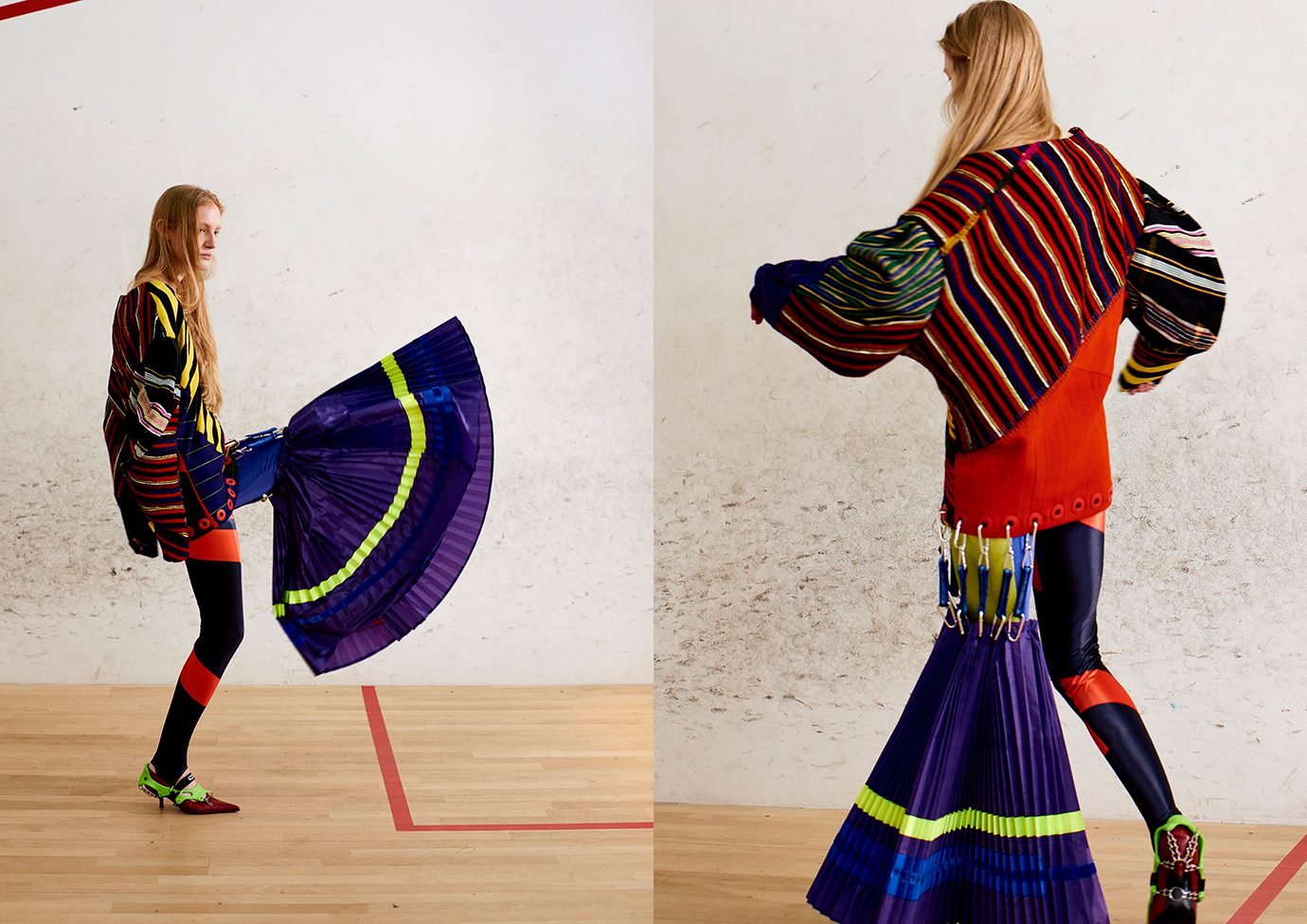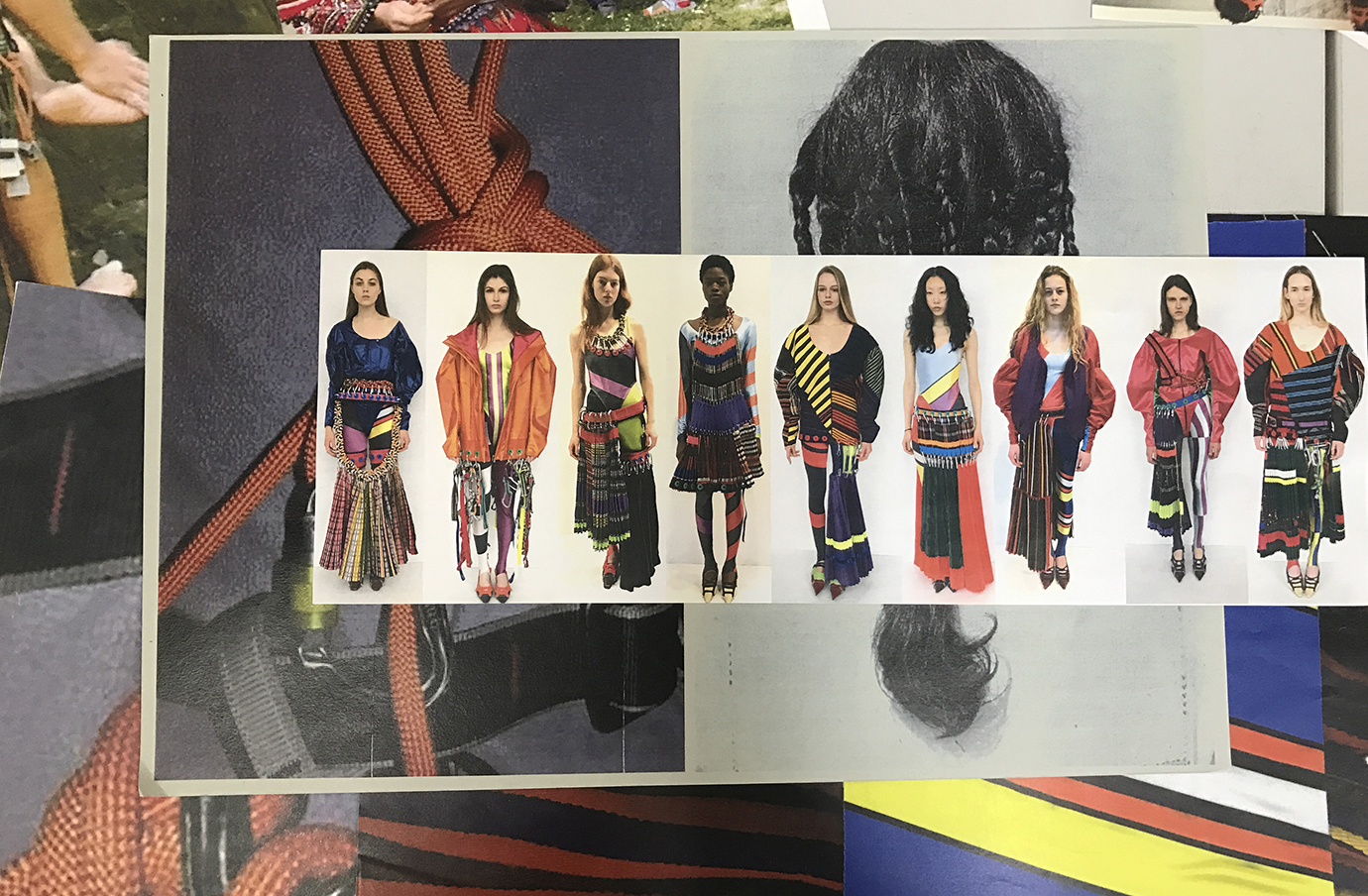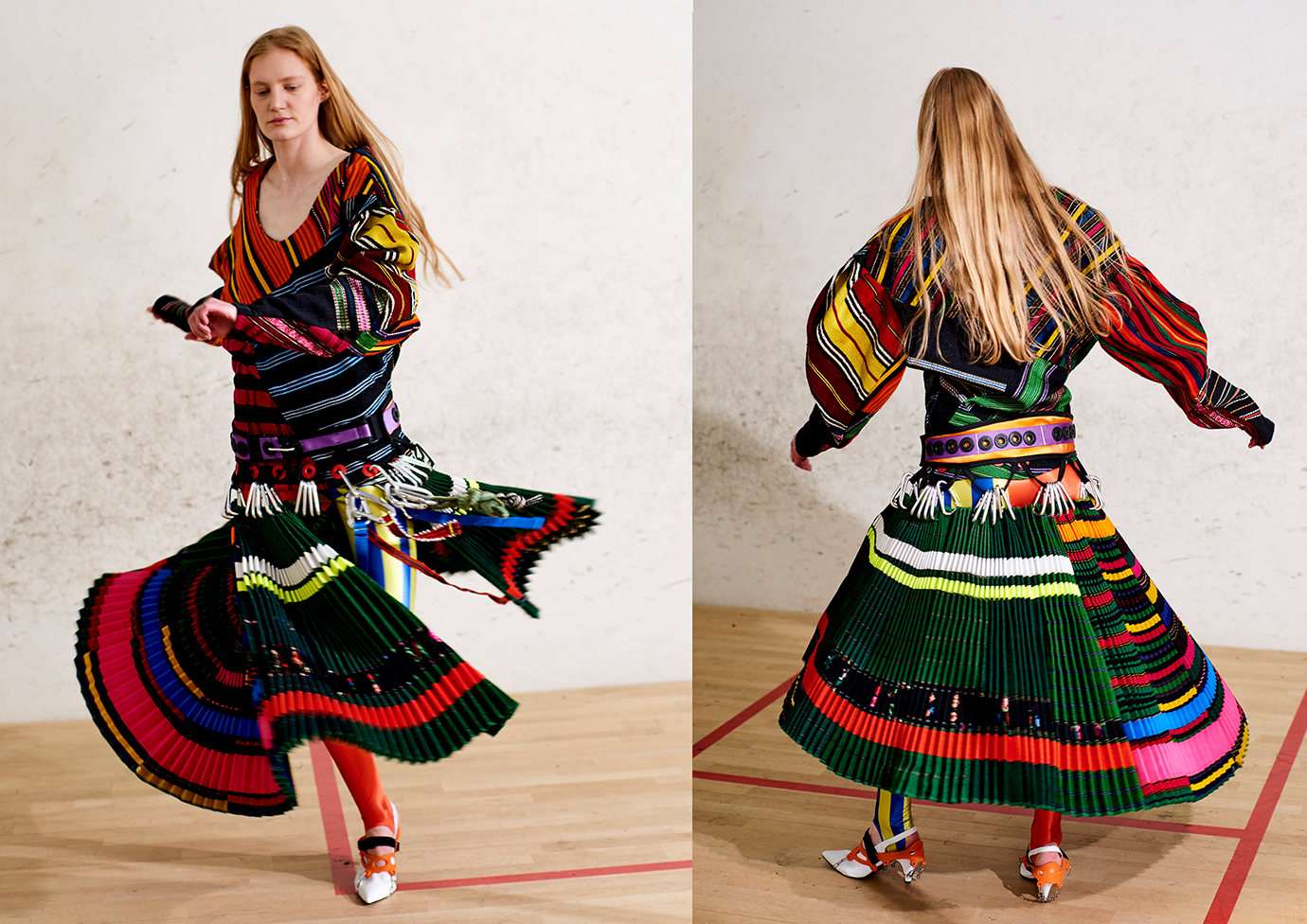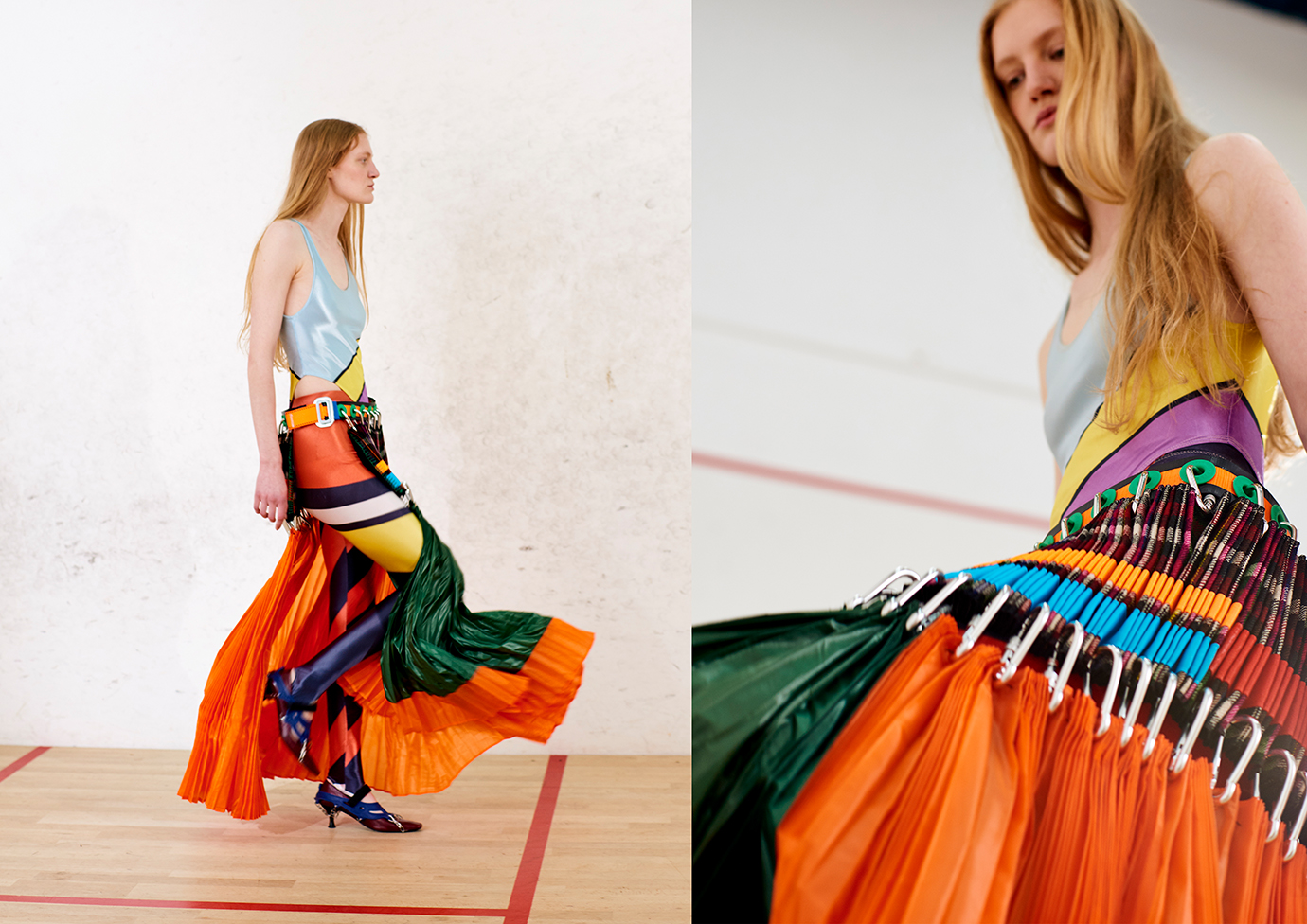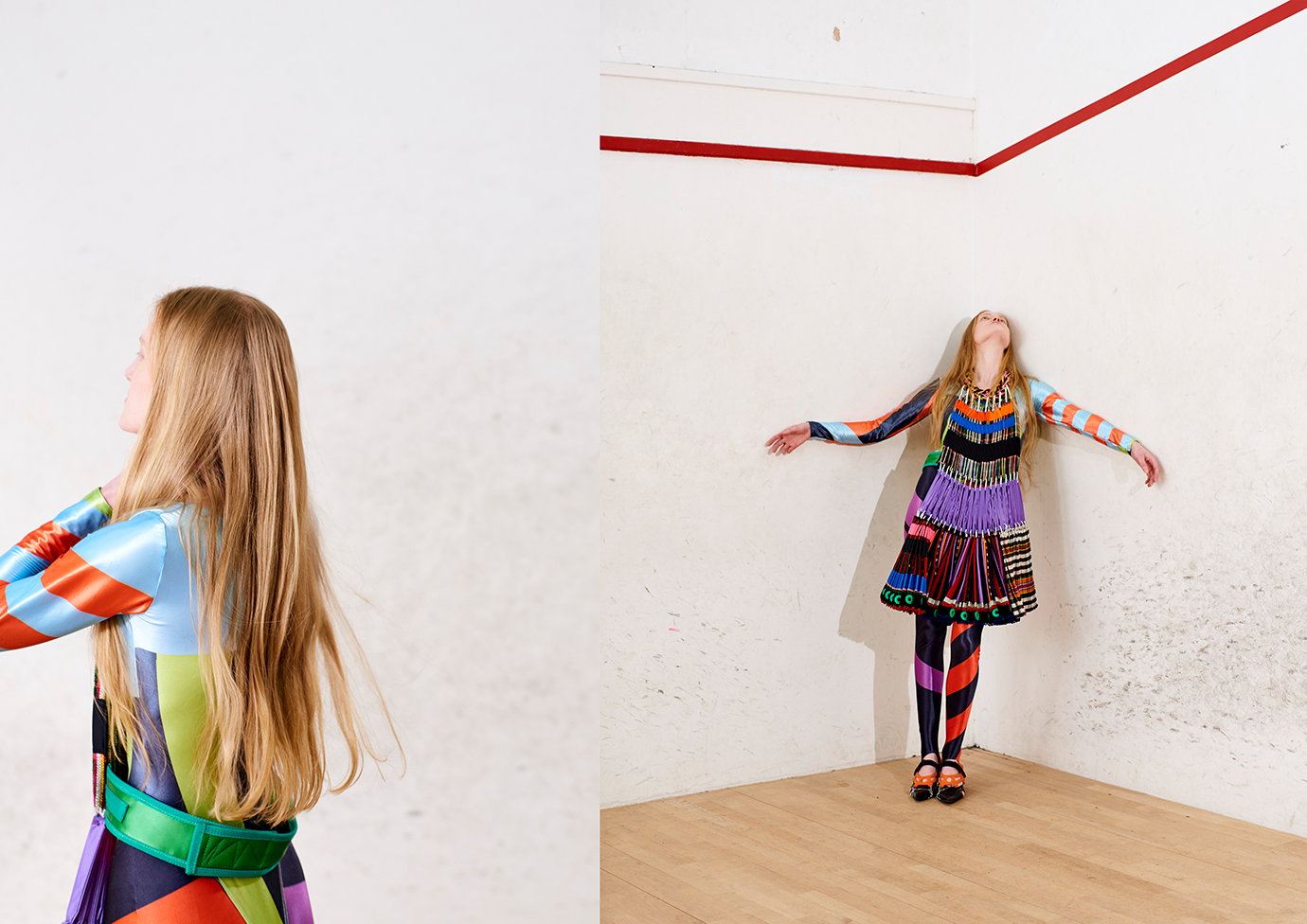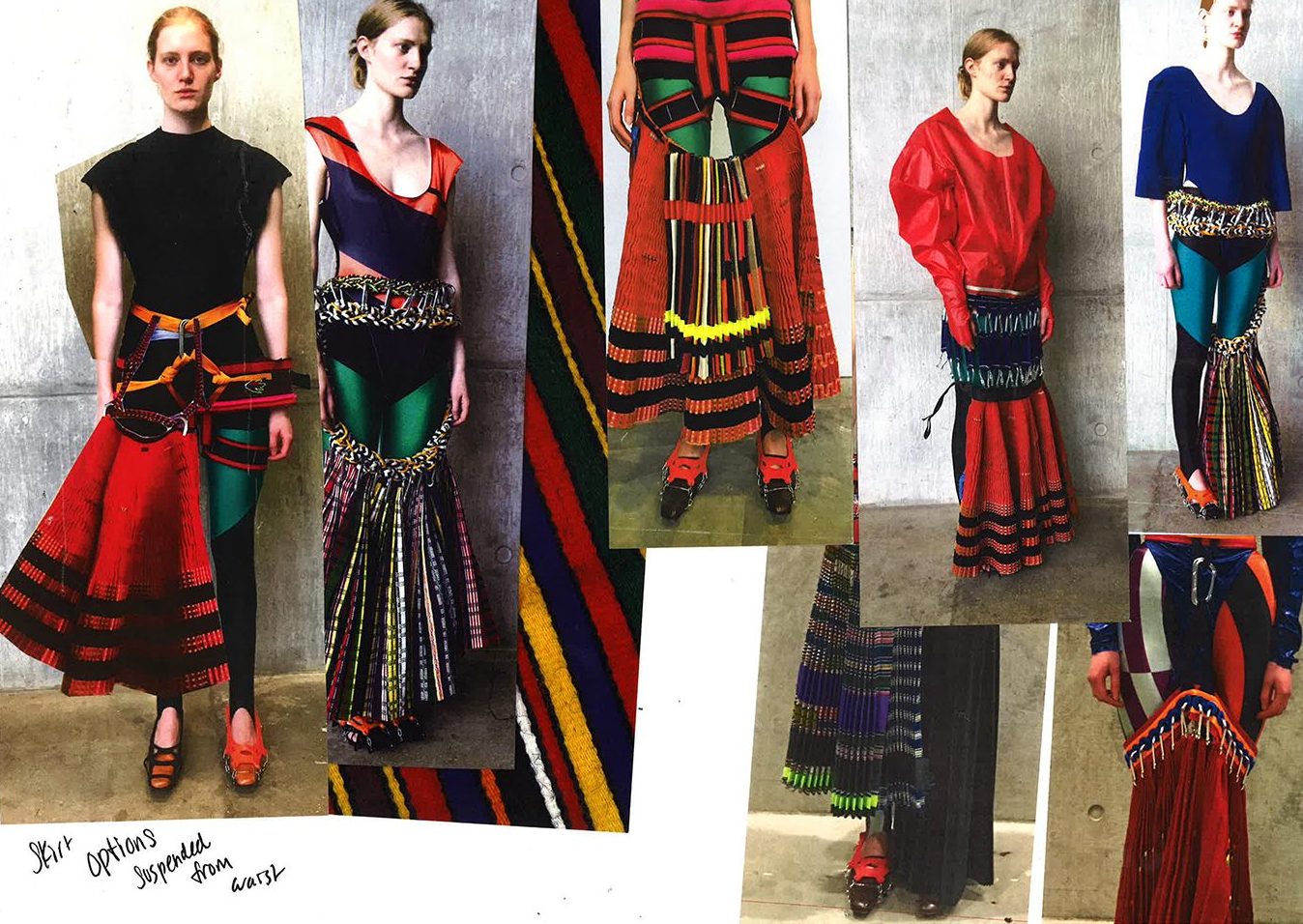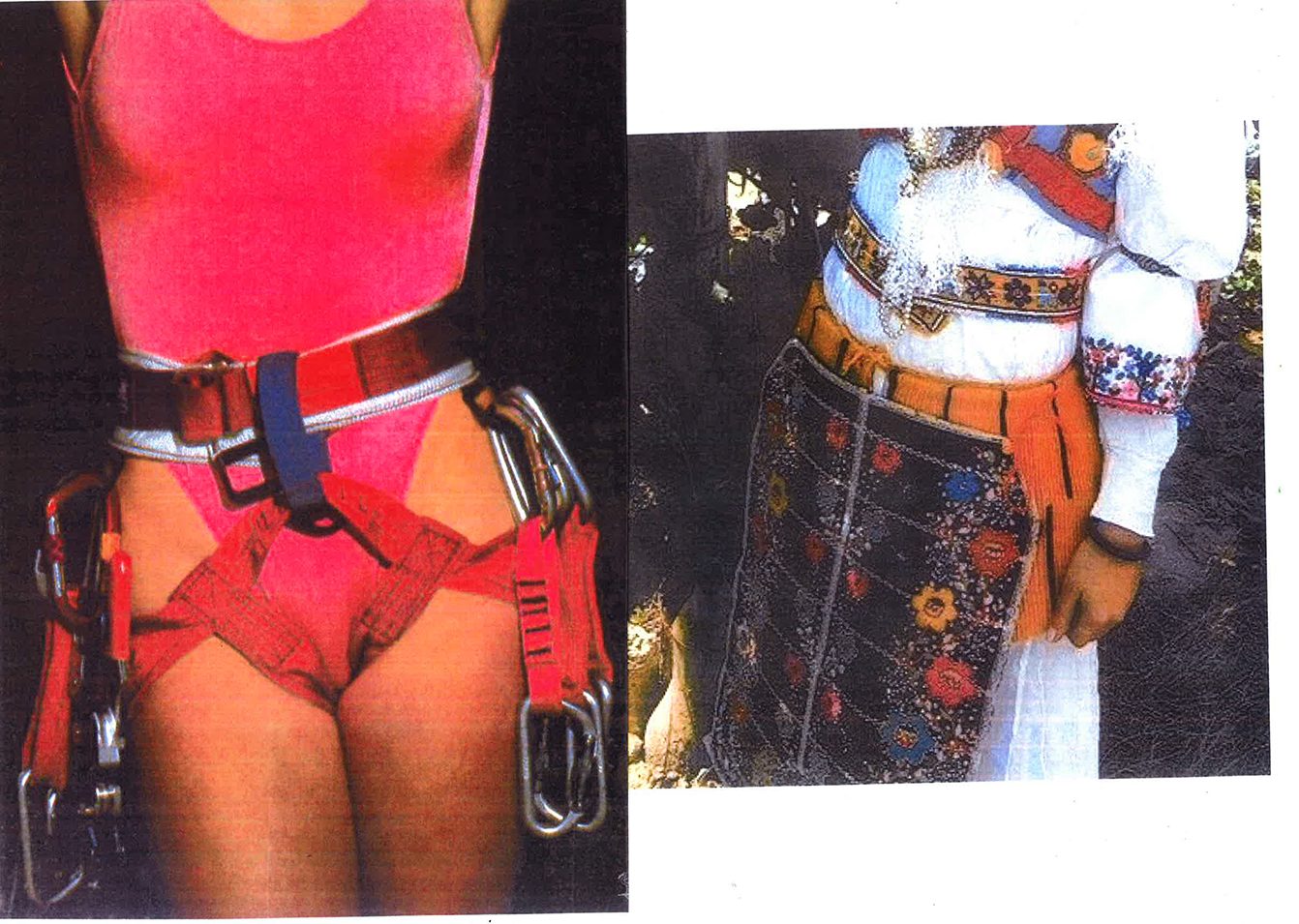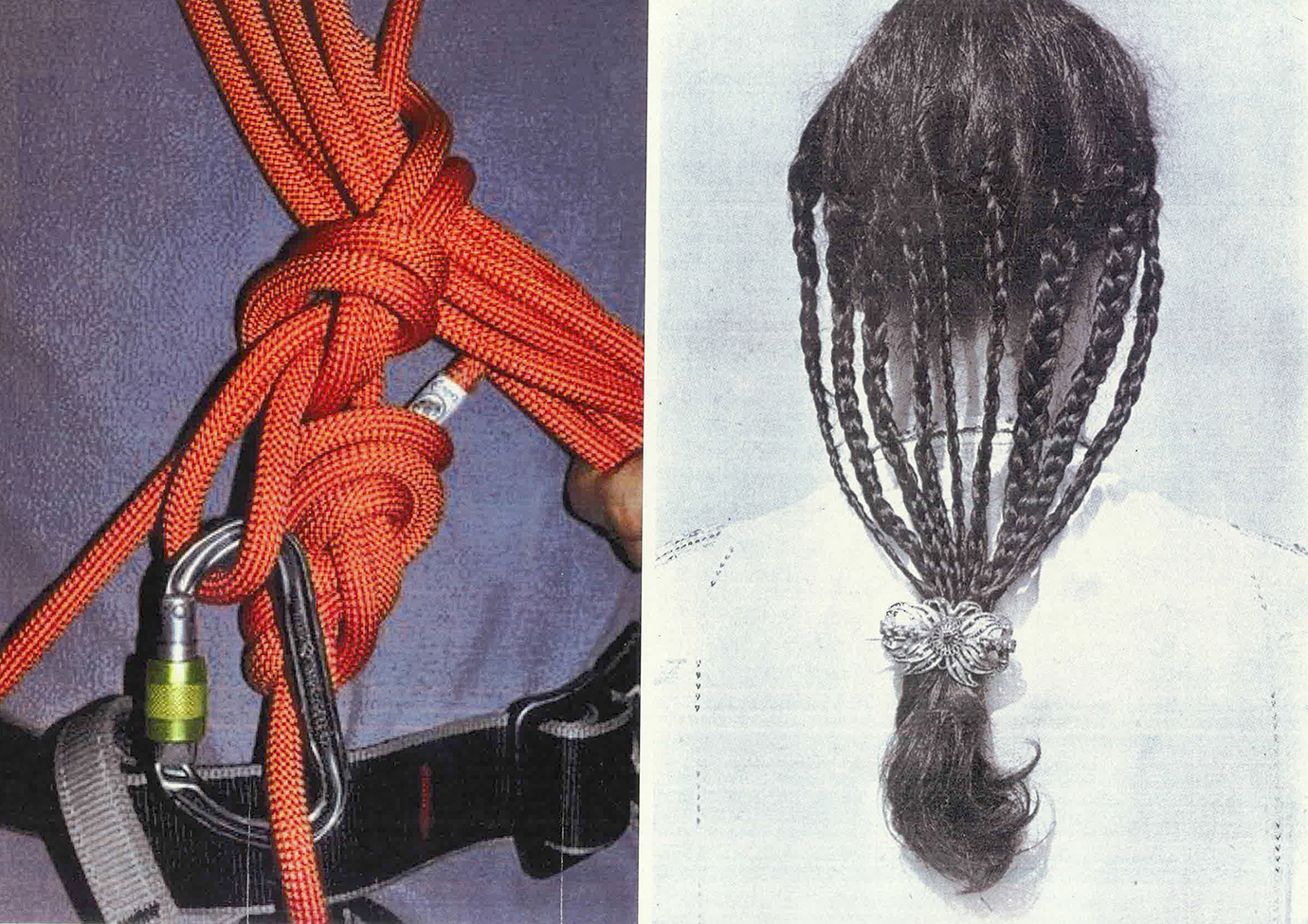Saying that might make it sound a bit over the top, but it’s not. One is humbled and impressed as they talk about their work and achievements. From the intensive research that went into their final collection, which included a trip to Bulgaria, to the preparations for the Central Saint Martins MA Fashion show in February – Laura and Emma have had an intensive year. I remember spotting Emma’s traditional Bulgarian dress around the MA Fashion studios and feel covertly ashamed I never got to compliment her on the choice (being Bulgarian myself).
Exploring the juxtaposing ideas of 80s rock climbing and Bulgarian national costume, Emma and Laura combine the world of sportswear fluidity with an avant-garde take on folklore. The duo is the second in the history of the MA Fashion course to enroll as a creative entity, after Marques’Almeida. Originally from Somerset, Laura came to London after completing a degree in textiles; Emma was the first person she spoke to on the BA.

